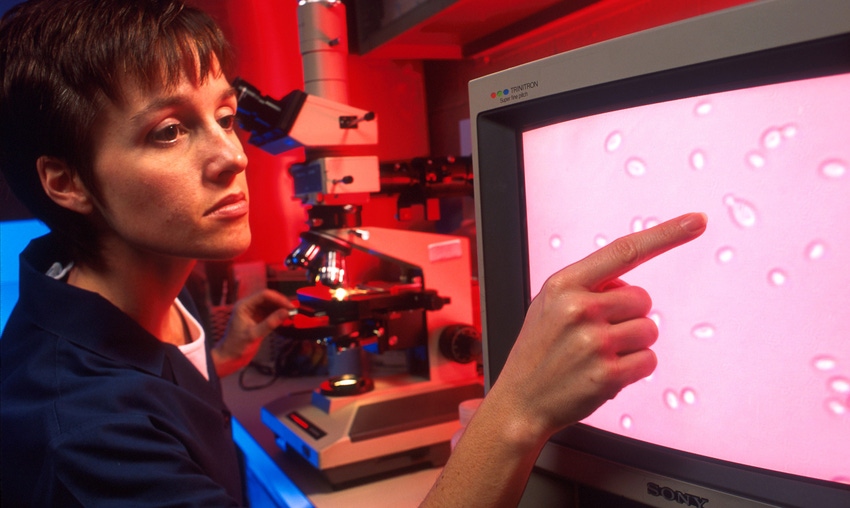January 29, 2021

Researchers at Washington State University’s School of Food Science are analyzing hundreds of non-Saccharomyces yeasts taken from vineyards all over Washington state, to determine what strains are most beneficial for fermentation.
“These non-saccharomyces yeasts influence the sensory quality of the final product,” said Charles Edwards, professor and food scientist in Food Science. “If you drink a glass of water, and then you drink of glass of chardonnay, you may feel that the wine is thicker on the tongue. That’s part of what is called mouthfeel. Many winemakers believe these yeast strains positively contribute to mouthfeel in the final wine.”
Saccharomyces vs. non-saccharomyces yeast
The winemaking process uses yeast to convert sugar into alcohol, which ferments the wine.
Often known as the baker’s or brewer’s yeasts, Saccharomyces yeast is an important part of food production. The term is Greek in origin, and translates to “sugar fungus.” It has long been used for brewing, distilling, making wine, and baking bread.
The other group of yeast, known as non-saccharomyces, refers to those found naturally on the grape before it is harvested. When grapes are harvested, crushed, and prepared for fermenting, non-saccharomyces yeasts are bound to be present in the juice.
“Non-saccharomyces yeasts can add flavor characteristics to the wine, but they can also negatively affect it, causing odd flavors and aromas,” said Heather Carbon, a graduate research assistant with the School of Food Science. “There is a huge trend lately in wineries wanting to use different types of yeast in their fermenting process, in order to get unique flavor characteristics.”
These wild strains of yeast can yield positive flavors for the final wine, or bring problems to the fermentation process. It can be hard to predict the outcome, since the impacts of the species are unknown.
In 2015, then WSU plant pathology professor Dean Glawe (now retired) along with Edwards took grape samples from vineyards all over Washington state, isolating hundreds of indigenous strains of wild non- Saccharomyces yeast to analyze.
The team found 55 different species of yeasts on grapes throughout Washington. Now, WSU researchers are looking through the culture collection to identify beneficial strains that might be useful to Washington winemakers.
“We’re trying to figure out what these strains of yeast are doing metabolically, how they’re processing that sugar from the grape, and seeing if we can use that to our benefit,” said Carbon.
Wine industry trends
“It didn’t take me long after talking with other winemakers and reading articles to start experimenting with non-saccharomyces yeast,” said Brian Carter, owner of Brian Carter Cellars in Woodinville, Wash.
“I started doing fermentations using wild non-saccharomyces yeast present on the grapes,” said Carter, who has served on the Wine Research Advisory Committee (WRAC) for 35 years, and serves as the industry liaison to Edwards’ research projects.
“Because they represent a lot of different species, not just strains, the differences they can generate in terms of aromas, mouthfeel, and flavor, are truly significant,” he said.
Results of the study are expected next year.
“The overall goal would be to bring some of these non-Saccharomyces yeasts to market once our research identifies the optimal growth conditions, and how these yeasts enhance wine quality,” said Carbon.
This project has supported multiple WSU graduate students, with research funded by Washington State University, Auction of Washington Wines, and all of Washington’s wine grape growers and wineries in partnership with the Washington State Wine Commission.
Source: Washington State University, which is solely responsible for the information provided and is wholly owned by the source. Informa Business Media and all its subsidiaries are not responsible for any of the content contained in this information asset.
You May Also Like




